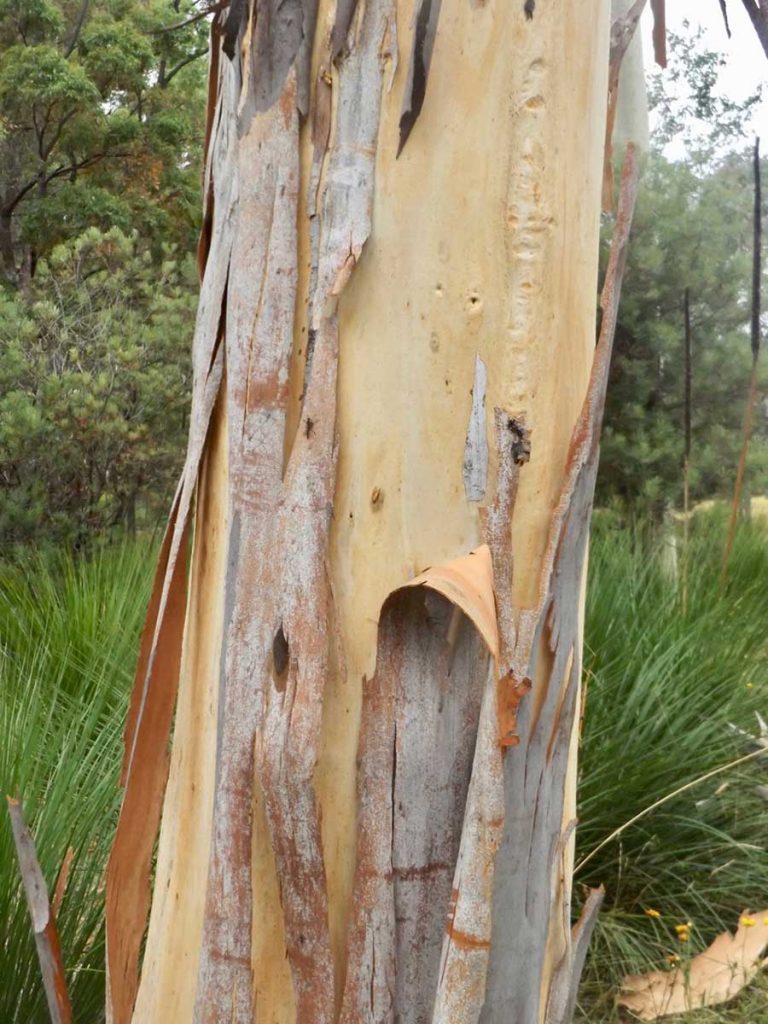
Eucalypts like Ribbon Gums or Mountain Grey Gums scatter long vertical strips of bark and reveal their smooth secret skins, while others change their image in different ways.
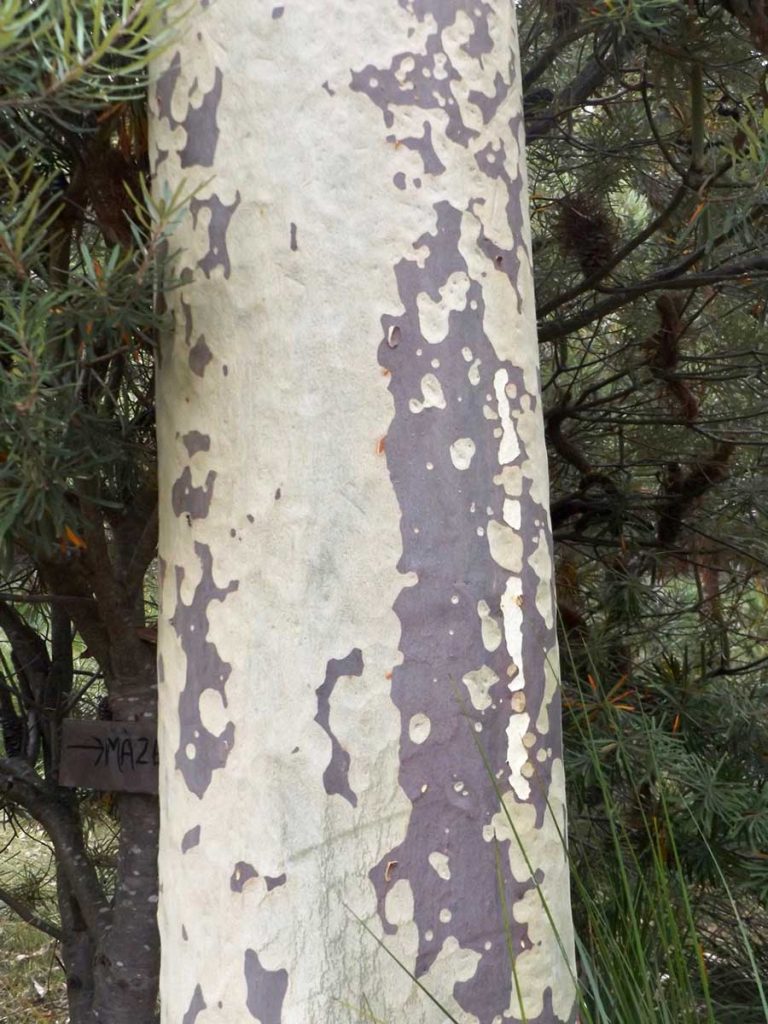
These Spotted Gums are less obvious in changing image and keep both old and new to earn their name.
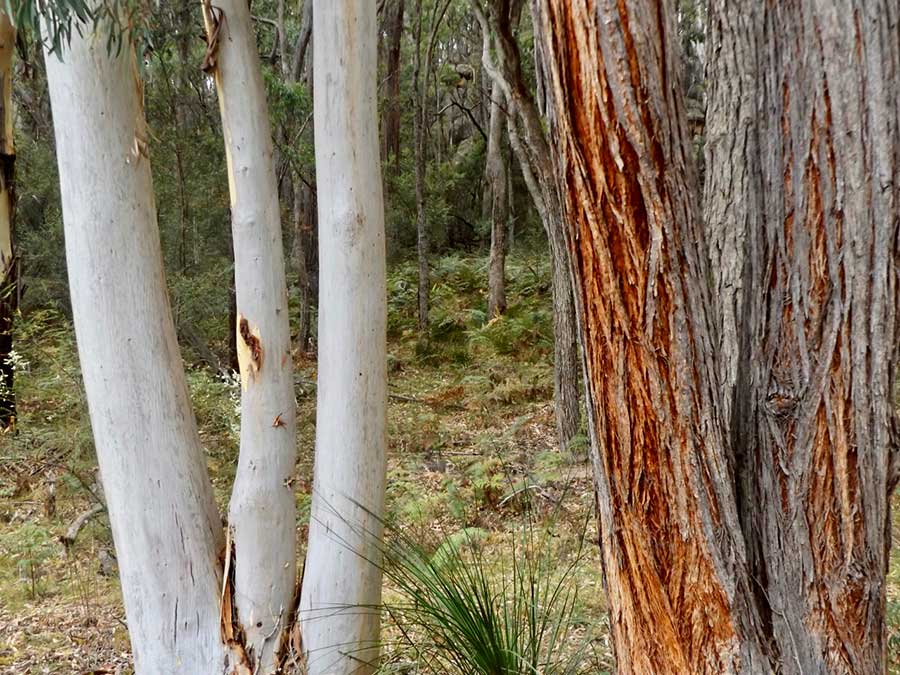
Stringybarks wear such distinctively rough coverings that it is hard to accept they are also eucalypts, related to its silky, strokable neighbours like this. I have never been tempted to stroke a stringybark …
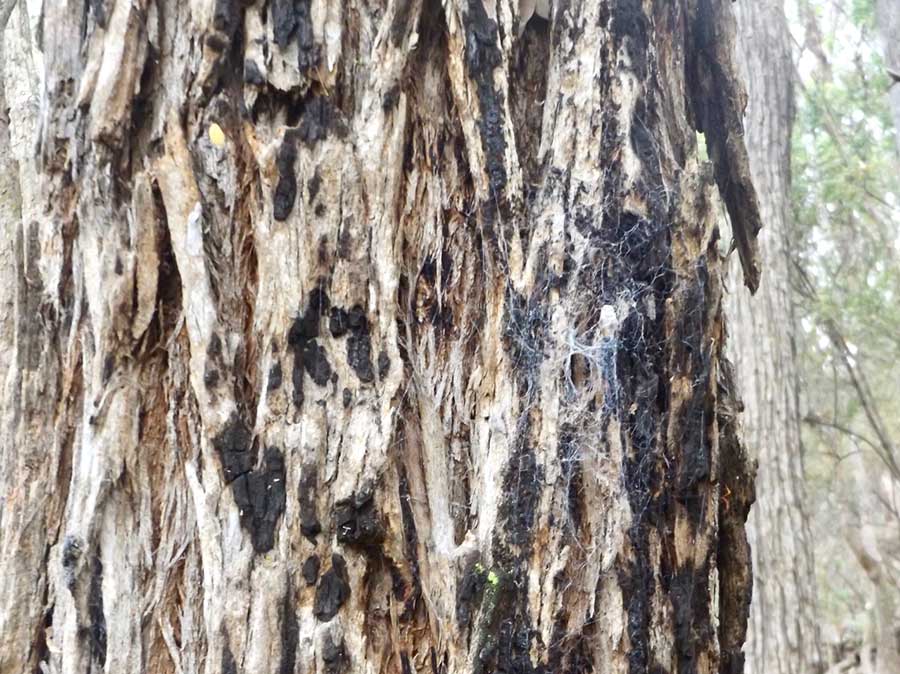
But their very roughness provides the safe crevices for small creatures to use, like this spider and its web.
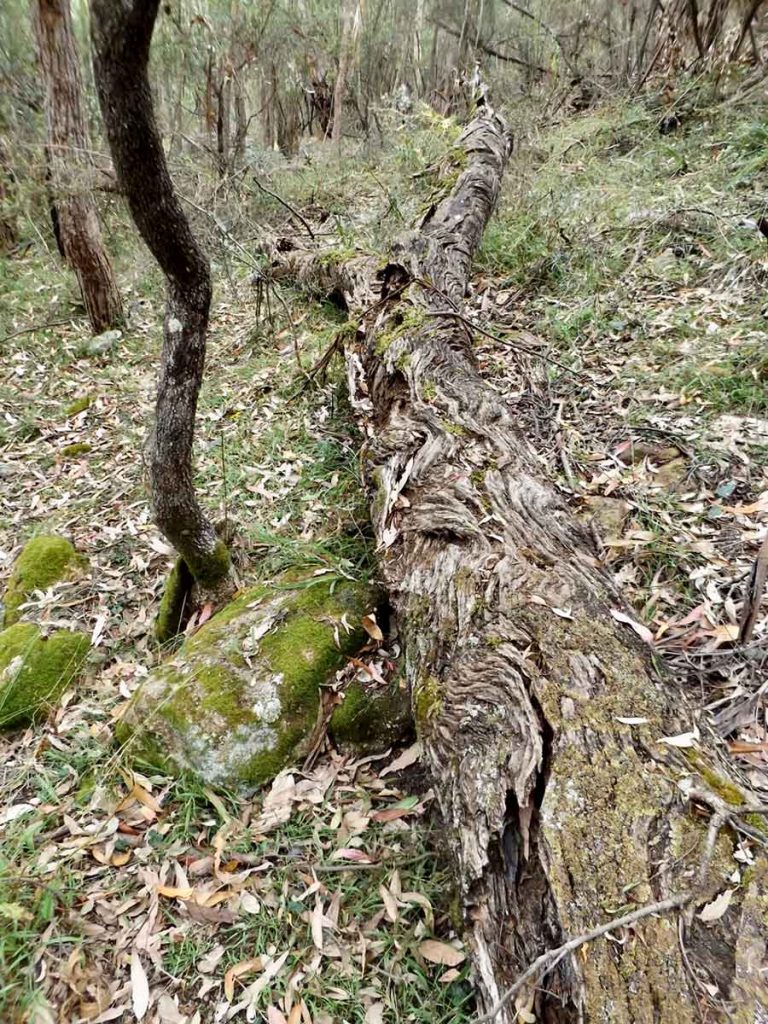
Even long fallen trees can make sculptures of the most intricate sort, home to moss and lichen, and no doubt hidden creatures.
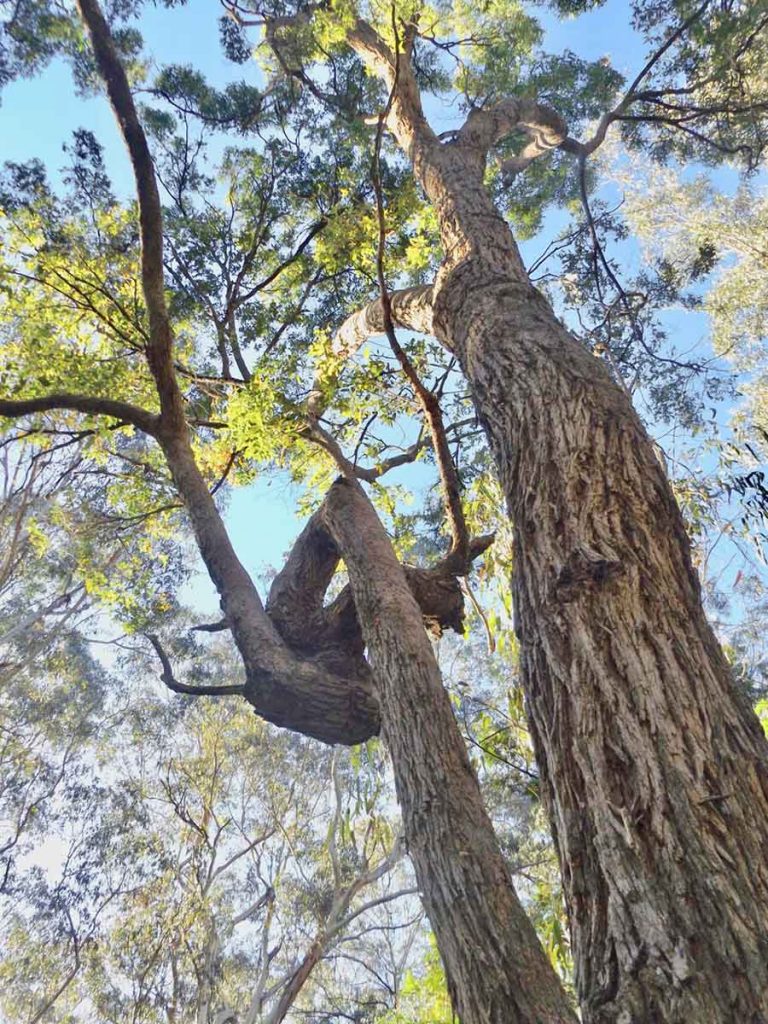
Of course many trees, especially Angophoras, decide to be quirky sculptures while still growing, taking not only vertical paths, but doing U-turns after various indecisions…
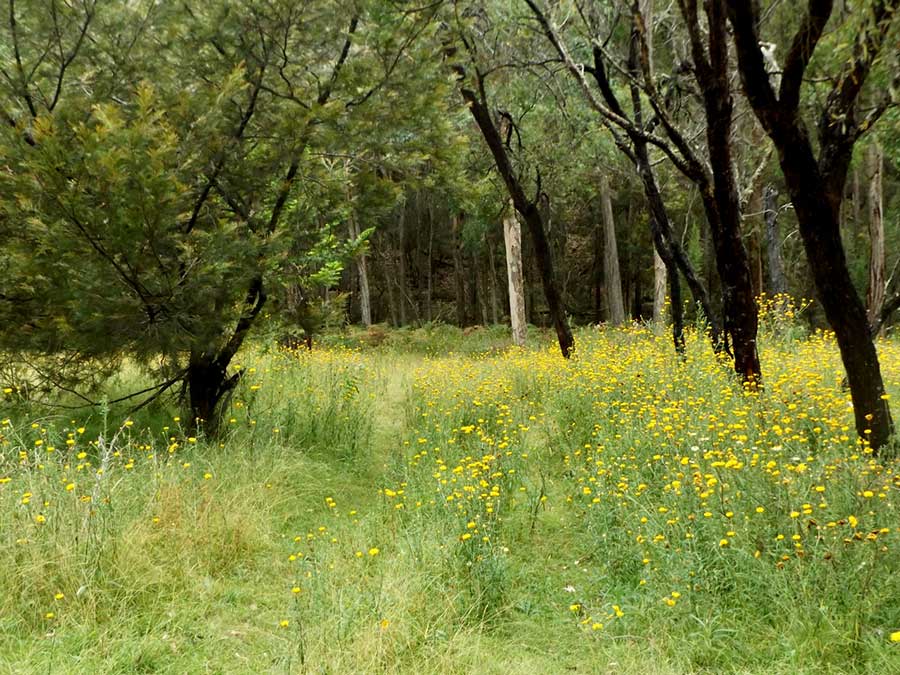
Amongst the black of the wattle trunks, the everlasting daisies are at waist height after such good rain, forming golden guards of honour along the tracks and a surprisingly widespread sea of yellow.
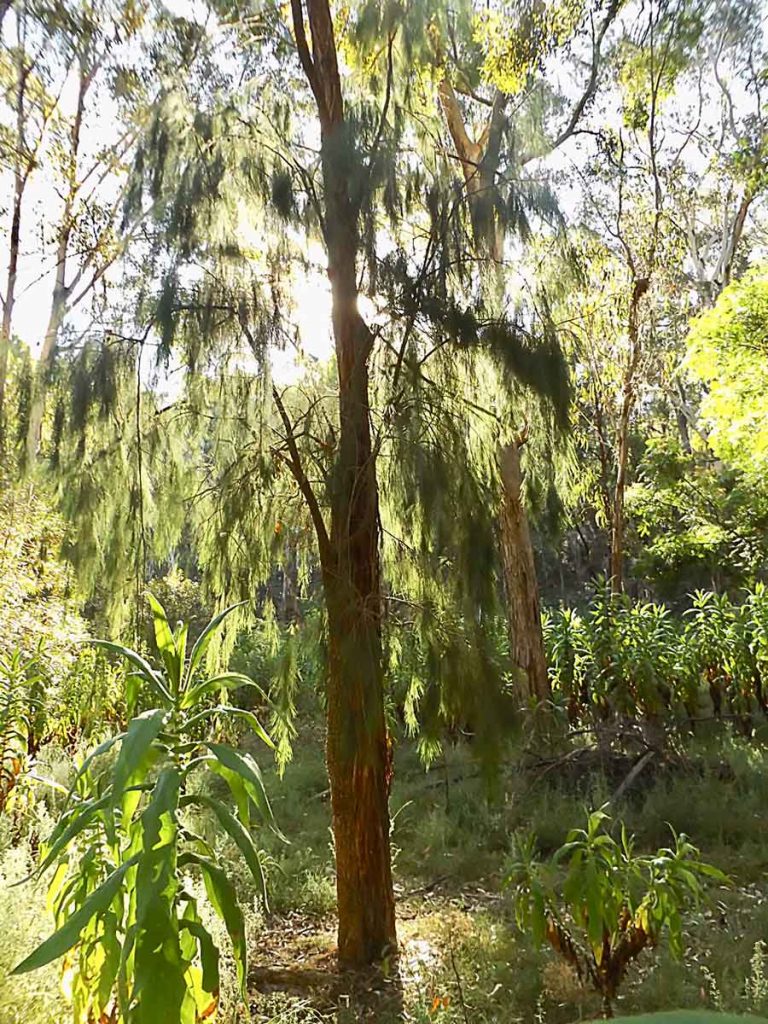
Even more surprising were these forests of tall leafy plants that looked out of place, like foreigners, if not aliens… Triffids?

I was assured they were native: Calomeria amaranthoides, or Incense Plant. It is a bi-ennial, growing up to 3 metres. Some people find the musky odour released when leaves and stems are brushed against to be unpleasant and, in fact, a skin irritant. I didn’t find that, but could not get over their strangeness. Again, the recent rains had facilitated more growth and more plants than had been seen here before.

A few of these overgrown plants were in flower and these panicles of pinkish flowers are why it is also called Plume Bush – they do resemble the Amaranthus often grown in gardens, for edible leaves and seed, or simply for decoration.
I was intrigued to meet them for the first time … a Triffid forest within a tree forest… and will certainly not forget them!